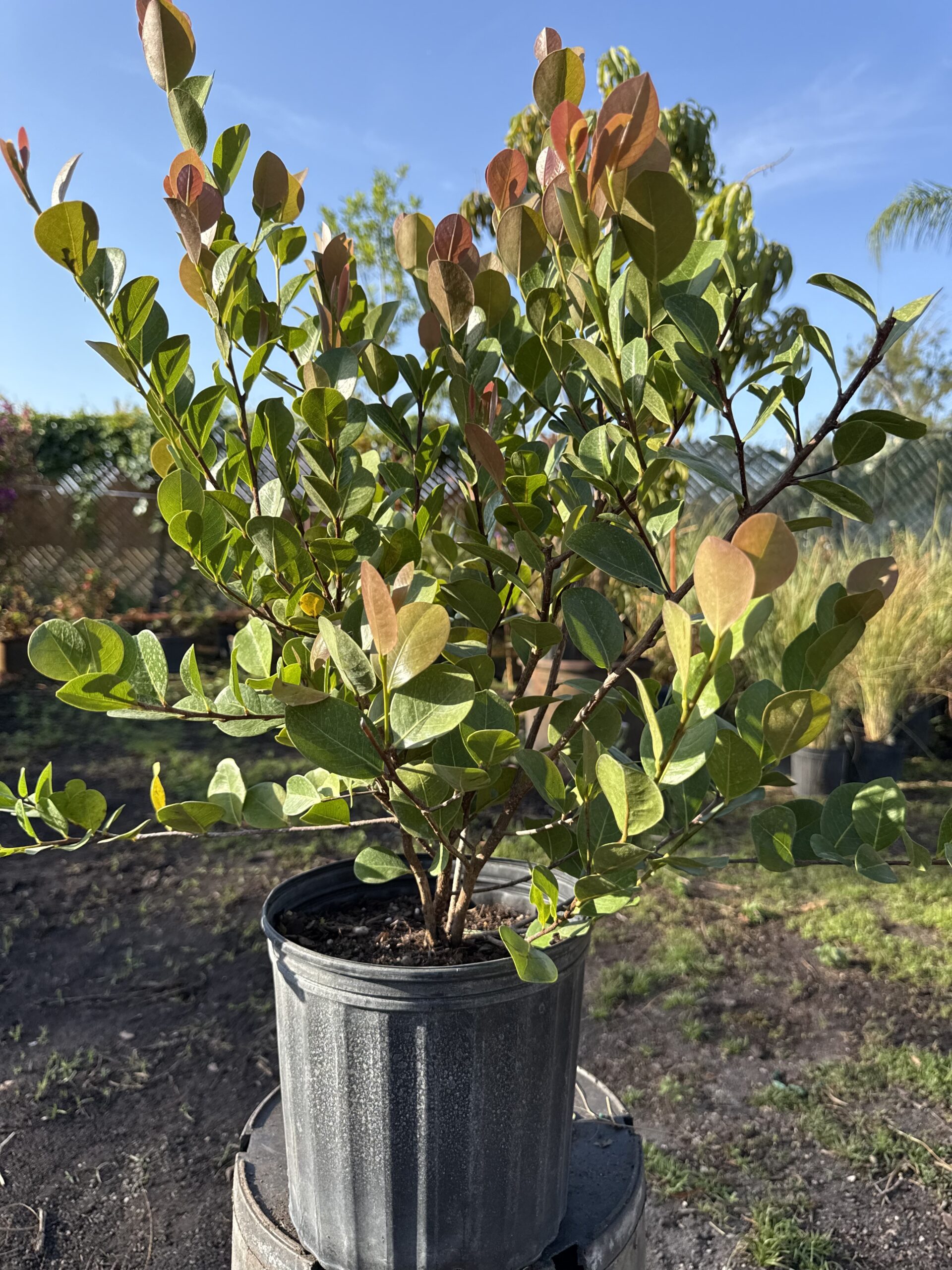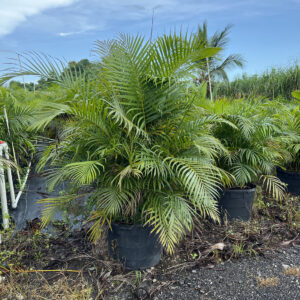Cocoplum
Cocoplum (Chrysobalanus icaco) is a hardy, evergreen shrub or small tree native to Florida and the Caribbean. It features glossy green leaves, small white flowers, and edible plum-like fruits that attract birds and wildlife. Growing 6–15 feet tall, it’s ideal for hedges, coastal gardens, or natural landscaping. Drought and salt-tolerant, cocoplum thrives in full sun to partial shade and requires minimal care. It’s perfect for adding beauty, privacy, and ecological value to any landscape.
$15.00
Availability: In stock
Related products
-
All Products
Areca Palm
$67.90 – $374.68Price range: $67.90 through $374.68 This product has multiple variants. The options may be chosen on the product page -
All Products
Bougainvillea Tree
$166.60 – $1,198.44Price range: $166.60 through $1,198.44 This product has multiple variants. The options may be chosen on the product page
Cocoplum (Chrysobalanus icaco) is a versatile, evergreen shrub or small tree native to coastal regions of Florida, the Caribbean, Central America, and parts of South America. Known for its dense, glossy foliage and edible fruits, cocoplum is a favorite in both natural landscapes and cultivated gardens due to its beauty, adaptability, and ecological importance.
This attractive plant typically grows between 6 to 15 feet tall and wide, though it can be pruned to maintain a more compact form or allowed to grow freely as a large shrub or small ornamental tree. Cocoplum features rounded, leathery leaves that range in color from bright green to deep emerald, often with a reddish tint on new growth. Its tidy, full appearance makes it an excellent choice for hedges, privacy screens, or standalone focal points in the landscape.
In spring and summer, cocoplum produces small, inconspicuous greenish-white flowers that attract pollinators such as bees and butterflies. These are followed by round, plum-like fruits that ripen to shades of pink, purple, or dark blue. The fruit is edible and mildly sweet, commonly eaten fresh or used to make jellies and jams. Wildlife, including birds and small mammals, also feed on the fruit, making cocoplum an important source of food in native ecosystems.
One of the plant’s standout qualities is its ability to thrive in a wide range of conditions. Cocoplum is highly tolerant of salt, wind, and sandy or alkaline soils, making it especially well-suited for coastal landscapes and beachfront plantings. It grows well in both full sun and partial shade and requires little maintenance once established. It is also drought-tolerant, though it appreciates occasional watering during extended dry periods.
In landscaping, cocoplum is often used in native plant gardens, coastal restoration projects, and residential or commercial settings for its dense growth habit and natural resilience. The plant is commonly available in two forms: the inland variety (Chrysobalanus icaco ‘Red Tip’ or ‘Horizontal’) with spreading, low-growing branches and red-tinged new growth, and the more upright, tree-like coastal variety (Chrysobalanus icaco ‘Green Tip’).
In addition to its ornamental and edible qualities, cocoplum supports biodiversity by providing shelter and food for birds, pollinators, and other wildlife. It also plays a role in erosion control and shoreline stabilization thanks to its strong, fibrous root system.
Overall, cocoplum is a beautiful, hardy, and multifunctional native plant that enhances both natural and designed landscapes. Whether used as a lush hedge, a fruit-bearing specimen, or a component of a wildlife-friendly garden, it offers year-round appeal and ecological value with minimal care.



